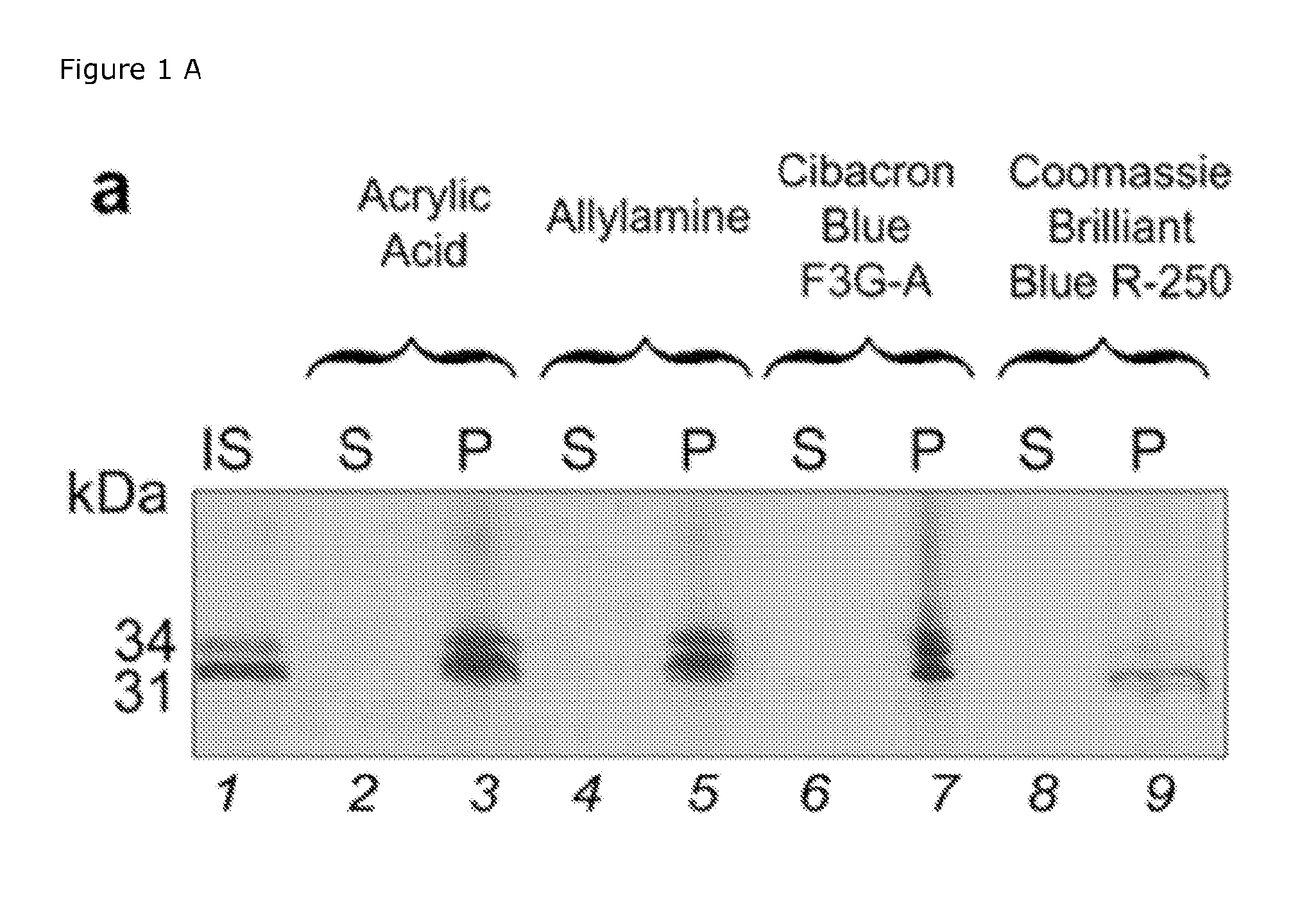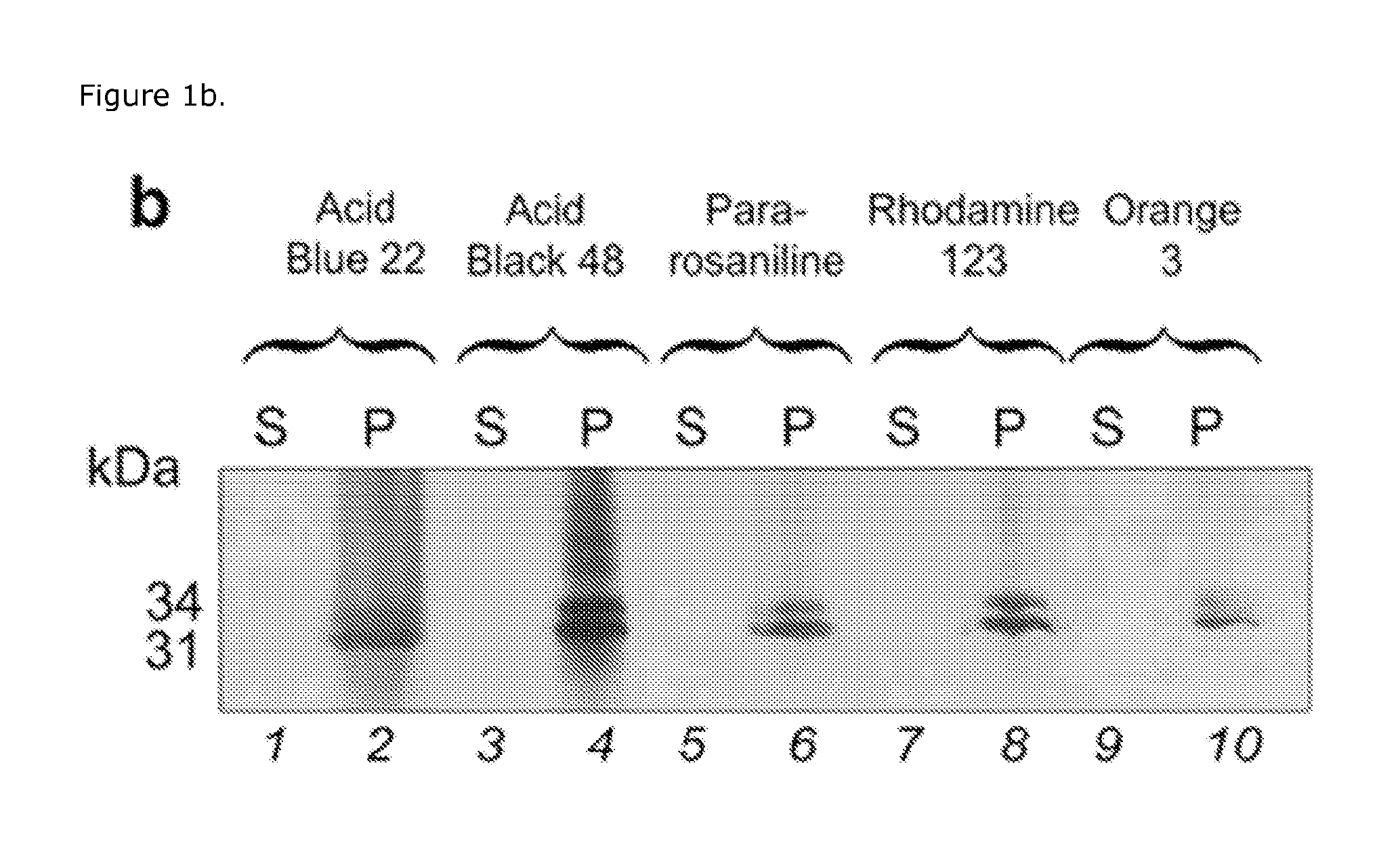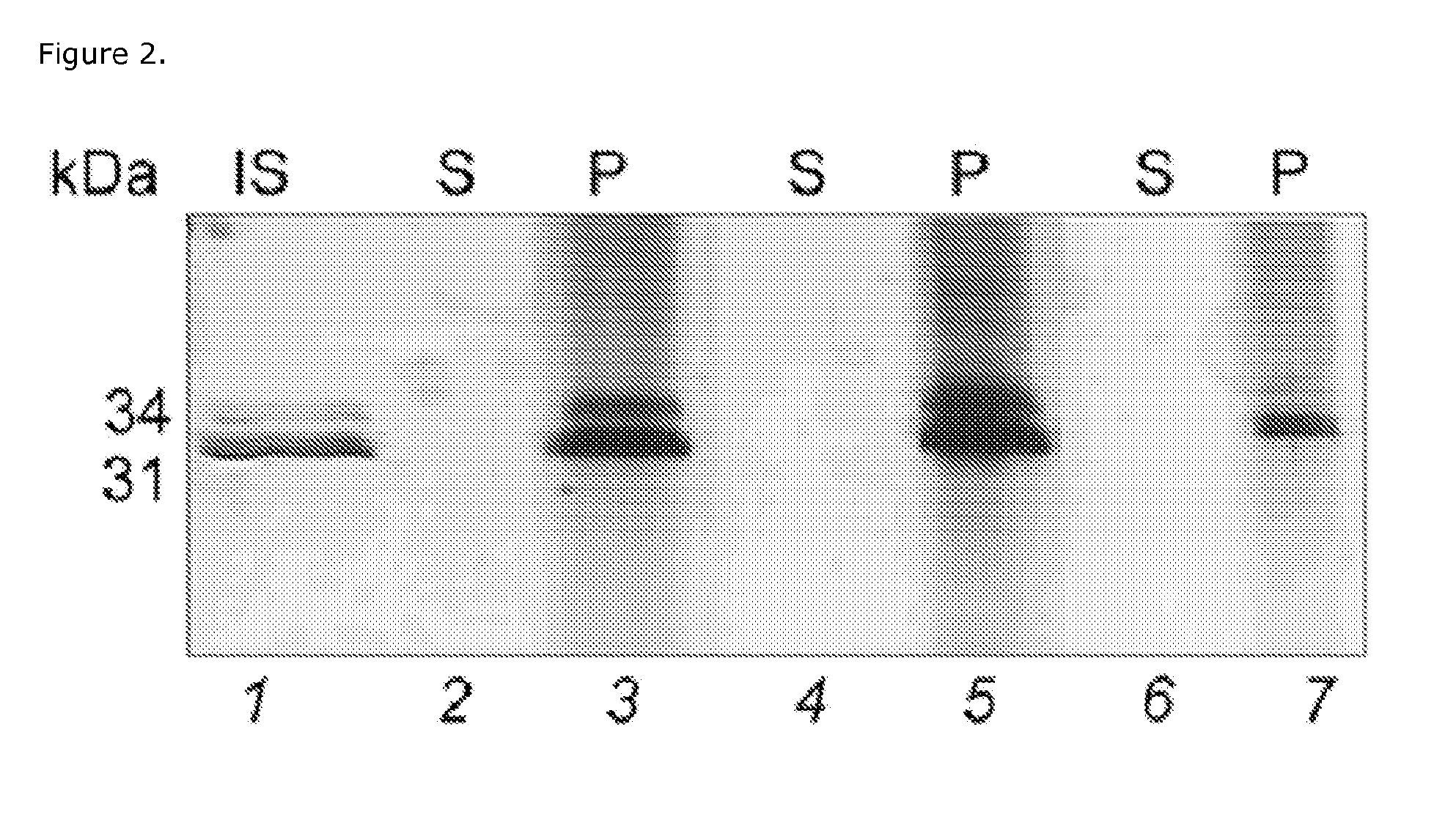Borrelia burgdorferi bacterial antigen diagnosic test using polymeric bait containing capture particles
a technology of antigen detection and borrelia burgdorferi, which is applied in the field of lyme disease diagnosis, can solve the problems of false negatives, false positives, and difficult diagnosis of bb infection, and achieve the effects of improving detection ability, reliable, rapid, and non-invasiv
- Summary
- Abstract
- Description
- Claims
- Application Information
AI Technical Summary
Benefits of technology
Problems solved by technology
Method used
Image
Examples
example 1
Polymer Capture Particle Synthesis
[0026]Polymeric captured particles were synthesized containing affinity chemical baits. N-isopropylacrylamide (NIPAm), N,N′-methylenebisacrylamide (BIS) polymeric capture particles were synthesized by precipitation polymerization. Capture particles containing acrylic acid (AAc) and allylamine (AA) as copolymers were synthesized as follows. In order to obtain NIPAm-AAc polymeric capture particles, NIPAm (5.2 g) and BIS (0.40 g) were dissolved in MilliQ water (600 mL). The solution was filtered with a nylon filter membrane, pore size 0.45 mm, thoroughly degassed and purged under nitrogen. Acrylic acid (500 mL) was added and the temperature of the system was raised to 80° C. Ammonium persulfate (KPS, 0.276 g) dissolved in water (5 mL) was added. The reaction was allowed to proceed for 6 h at 80° C. The reaction was allowed to cool to room temperature and stirred overnight. Polymeric capture particles were extensively washed by centrifugation in order t...
example 2
Polymeric Capture Particle Characterization
[0028]Particle size dependence on temperature and pH was determined via photon correlation spectroscopy (N5 Submicron microparticle Size Analyzer, Beckman Coulter). The pH of the solution was controlled by adding proper amounts of NaOH and HCl. Average values were calculated for three measurements using a 200 s integration time, and the solutions were allowed to thermally equilibrate for 10 min before each set of measurements. Measured values were then converted to capture particle sizes via the Stokese Einstein relationship [26]. Capture particle diameters were measured at increasing temperature from 20° C. to 50° C. in MilliQ water (pH 5.5) and, subsequently, at pH values ranging from 3 to 8 (25° C.). Atomic Force Microscopy (AFM) images of the capture particles were obtained using a NanoInk Atomic Force Microscope (NSCRIPTOR_DPNH System). The NIPAm-AB48 capture particle suspension in MilliQ water (pH 5.5, 1 mg / mL) was sonicated before im...
example 3
SDS-PAGE Analysis
[0030]Sodium dodecyl sulfate polyacrylamide gel electrophoresis (SDS-PAGE) was performed using 4-20% Tris-Glycine gel in the presence of Tris-Glycine SDS running Buffer on a Novex X-Cell II™ Mini-Cell (Invitrogen Corporation, USA), at 120 V. The gels were stained by silver staining.
[0031]Aliquots of capture particles were incubated with analyte solution, synthetic urine (Surine) or human urine, for 30 min at room temperature under slow rotation. Human urine was preliminarily centrifuged at 3000 rcf for 5 min and 4° C. to pellet cellular content. The specific gravity of the urine was measured and noted using a pocket refractometer (PAL-10S Refractometer, Atago Inc.). After incubation, the capture particles were centrifuged (7 min, 25° C., 16,100 rcf), the supernatant was saved and the capture particles were washed three times by resuspending the pellets in water (1 mL) and centrifuging (7 min, 25° C., 16,100 rcf). The capture particles were then directly loaded on th...
PUM
| Property | Measurement | Unit |
|---|---|---|
| pH | aaaaa | aaaaa |
| concentration | aaaaa | aaaaa |
| concentration | aaaaa | aaaaa |
Abstract
Description
Claims
Application Information
 Login to View More
Login to View More - R&D
- Intellectual Property
- Life Sciences
- Materials
- Tech Scout
- Unparalleled Data Quality
- Higher Quality Content
- 60% Fewer Hallucinations
Browse by: Latest US Patents, China's latest patents, Technical Efficacy Thesaurus, Application Domain, Technology Topic, Popular Technical Reports.
© 2025 PatSnap. All rights reserved.Legal|Privacy policy|Modern Slavery Act Transparency Statement|Sitemap|About US| Contact US: help@patsnap.com



